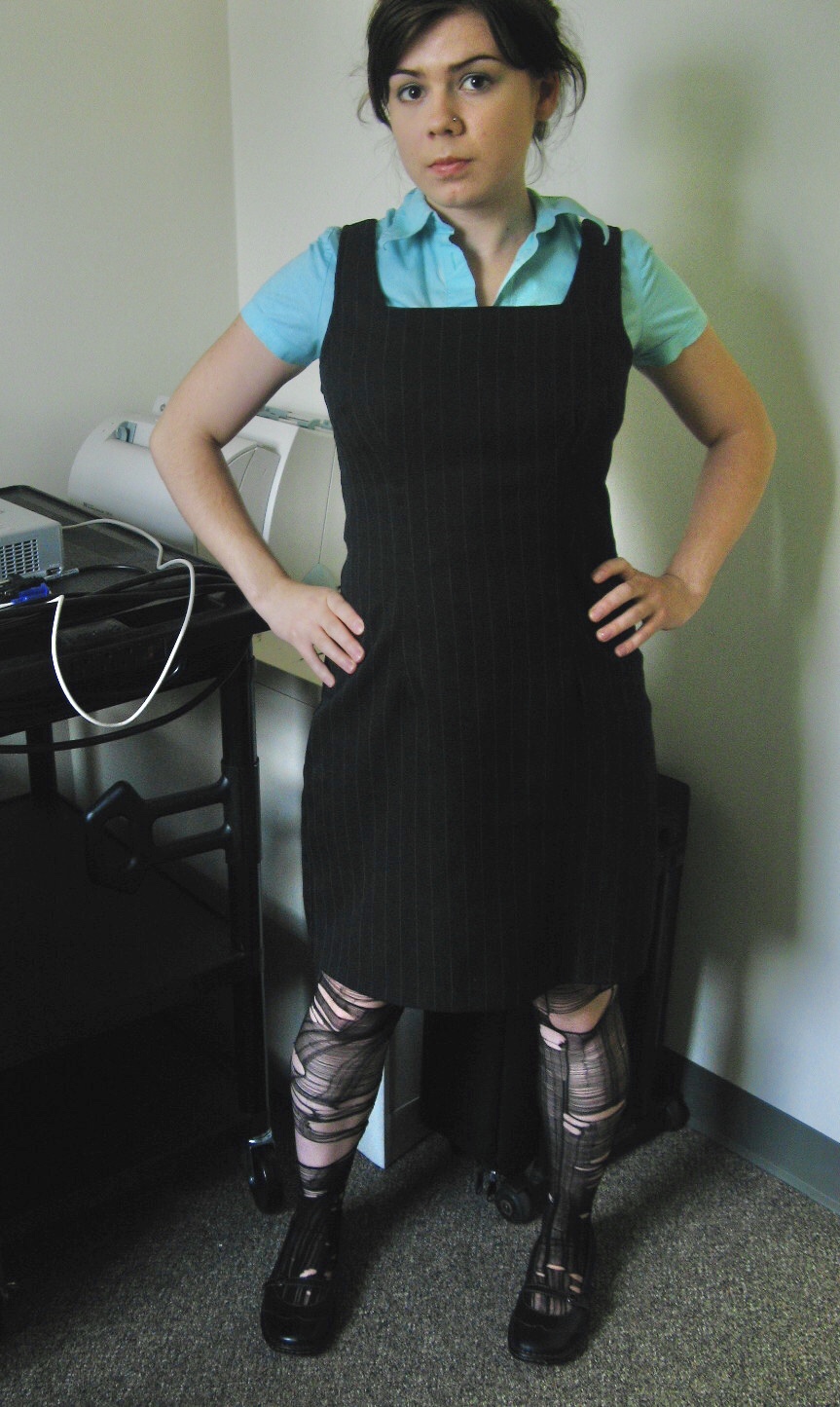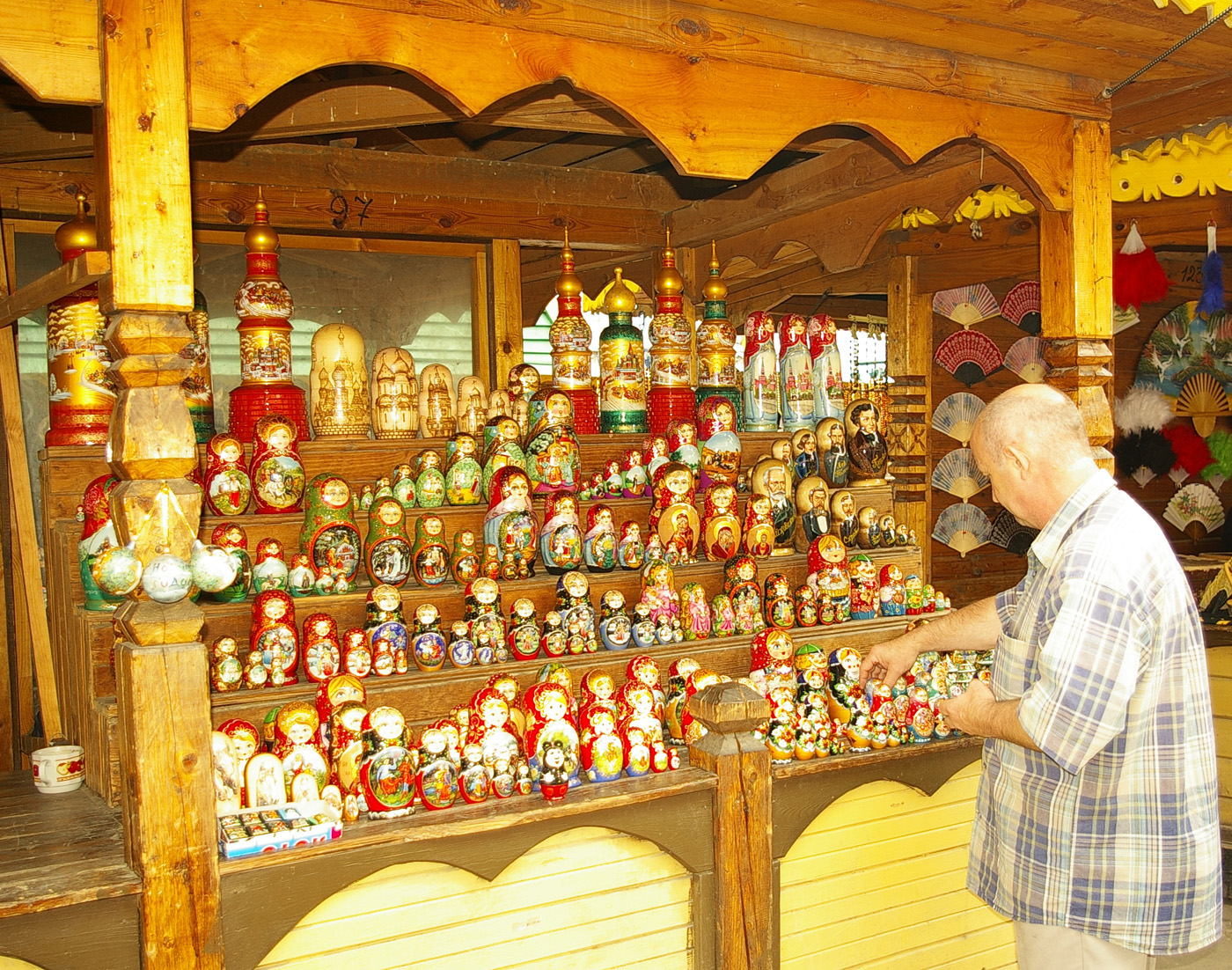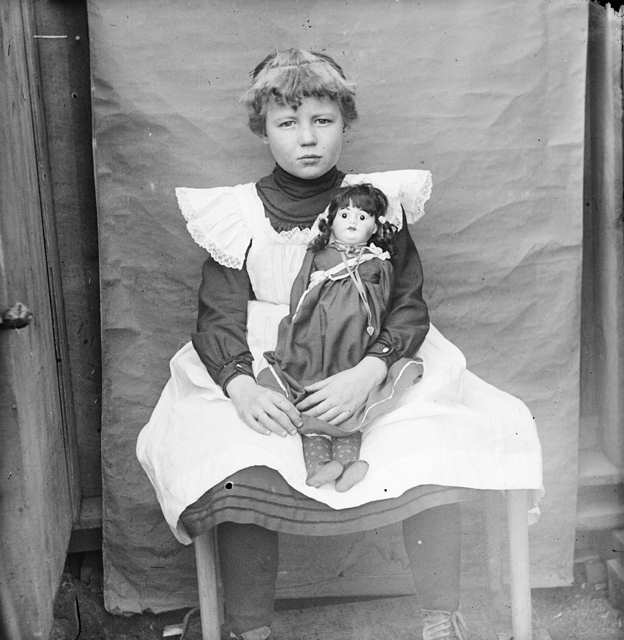|
Sarafan
A sarafan ( rus, сарафа́н, p=sərɐˈfan, from ''sarāpā'', literally "romhead to feet") is a long, trapezoidal Russian dress worn by girls and women and forming part of Russian traditional folk costume. Traditional Russian costume consists of straight, flowing lines. Beginning at the turn of the 18th century, the sarafan became the most popular article of peasant women's clothing in the Northern and Central regions of Russia. Sarafans were regularly worn until well into the 20th century, having first been mentioned in chronicles dating back to the year 1376. The origin of the term Sarafan lies in Persia, but the structure of the sarafan was inspired by Viking women clothing. Old Russia cultivated especially during the era of Grand Principality of Moscow strong ties to Western Asia and Southwest Asia and served also as an intermediary in the trade between European countries like Sweden, and Asian countries like Persia, and what is today Turkey. The sarafan most like ... [...More Info...] [...Related Items...] OR: [Wikipedia] [Google] [Baidu] |
Kokoshnik
The kokoshnik ( rus, коко́шник, p=kɐˈkoʂnʲɪk) is a traditional Russian headdress worn by women and girls to accompany the sarafan. The kokoshnik tradition has existed since the 10th century in the city of Veliky Novgorod. It spread primarily in the northern regions of Russia and was very popular from 16th to 19th centuries. It is still to this day an important feature of Russian dance ensembles and folk culture and inspired the Kokoshnik architecture, Kokoshnik style of architecture. Overview Historically a kokoshnik is a headdress worn by married women, though maidens also wore a headdress very similar to a kokoshnik, but open in the back, named a ''povyazka''. The word ''kokoshnik'' describes a great variety of headdresses worn throughout Russia, including the cylindrical hats of Veliky Novgorod, two-pointed nimbus ''kika'' of Vladimir, triangular ''kika'' of Kostroma, small pearl hats of Kargopol, and scarlet kokoshniks of Moscow. While in the past kokoshnik st ... [...More Info...] [...Related Items...] OR: [Wikipedia] [Google] [Baidu] |
Jumper Dress
A jumper (in American English), jumper dress, or pinafore dress is a sleeveless, collarless dress intended to be worn over a blouse, shirt, T-shirt or sweater. Hemlines can be of different lengths and the type of collar and whether there is pleating are also variables in the design. In British English, the term ''jumper'' describes what is called a '' sweater'' in American English. Also, in more formal British usage, a distinction is made between a pinafore dress and a pinafore. The latter, though a related garment, has an open back and is worn as an apron. In American English, ''pinafore'' always refers to an apron. A sundress, like a jumper, is sleeveless and collarless; however, such articles are not worn over a blouse or sweater, and are of distinctly different cuts and fashions. The apron dress may be viewed as a special case of the jumper. If the design of the dress is directly inspired by an apron (having a bib in front and ties in the back, for example), the gar ... [...More Info...] [...Related Items...] OR: [Wikipedia] [Google] [Baidu] |
PG Girl With Strawberries
PG, P.G., P&G, pg, or Pg, or similar, may refer to: *Parental Guidance (PG), a content rating in the following motion picture content rating systems and television content rating systems: ** Australian Classification Board ** Film Censorship Board in Barbados ** Canadian motion picture rating system/Canadian Home Video Rating System ** Canadian TV Classification System ** Cook Islands Censorship Office ** Hong Kong television rating system ** Irish Film Classification Office ** Jamaican motion picture rating system ** Kenya Film Classification Board ** Censor Board Committee in Kuwait ** Lebanese Censorship Board ** National Bureau of Classification in the Maldives ** Film Board in Malta ** Film Classification Board in Mauritius ** Classification Office (New Zealand) ** New Zealand television rating system ** National Film and Video Censors Board in Nigeria ** Movie and Television Review and Classification Board in the Philippines ** General Commission for Audiovisual Me ... [...More Info...] [...Related Items...] OR: [Wikipedia] [Google] [Baidu] |
Matryoshka Doll
Matryoshka dolls (), also known as stacking dolls, nesting dolls, Russian tea dolls, or Russian dolls, are a set of wooden dolls of decreasing size placed one inside another. The name ''Matryoshka'' is a diminutive form of ''Matryosha'' (), in turn a hypocorism of the Russian female first name '' Matryona'' (). A set of matryoshkas consists of a wooden figure, which separates at the middle, top from bottom, to reveal a smaller figure of the same sort inside, which has, in turn, another figure inside of it, and so on. The first Russian nested doll set was made in 1890 by wood turning craftsman and wood carver Vasily Zvyozdochkin from a design by Sergey Malyutin, who was a folk crafts painter at Abramtsevo. Traditionally the outer layer is a woman, dressed in a Russian sarafan dress. The figures inside may be of any gender; the smallest, innermost doll is typically a baby turned from a single piece of wood. Much of the artistry is in the painting of each doll, which can be ... [...More Info...] [...Related Items...] OR: [Wikipedia] [Google] [Baidu] |
18th-century Fashion
The 18th century lasted from 1 January 1701 (represented by the Roman numerals MDCCI) to 31 December 1800 (MDCCC). During the 18th century, elements of Enlightenment thinking culminated in the Atlantic Revolutions. Revolutions began to challenge the legitimacy of monarchical and aristocratic power structures. The Industrial Revolution began mid-century, leading to radical changes in human society and the environment. The European colonization of the Americas and other parts of the world intensified and associated mass migrations of people grew in size as part of the Age of Sail. During the century, slave trading expanded across the shores of the Atlantic Ocean, while declining in Russia and China. Western historians have occasionally defined the 18th century otherwise for the purposes of their work. For example, the "short" 18th century may be defined as 1715–1789, denoting the period of time between the death of Louis XIV of France and the start of the French Revoluti ... [...More Info...] [...Related Items...] OR: [Wikipedia] [Google] [Baidu] |
17th-century Fashion
The 17th century lasted from January 1, 1601 (represented by the Roman numerals MDCI), to December 31, 1700 (MDCC). It falls into the early modern period of Europe and in that continent (whose impact on the world was increasing) was characterized by the Baroque cultural movement, the latter part of the Spanish Golden Age, the Dutch Golden Age, the French '' Grand Siècle'' dominated by Louis XIV, the Scientific Revolution, the world's first public company and megacorporation known as the Dutch East India Company, and according to some historians, the General Crisis. From the mid-17th century, European politics were increasingly dominated by the Kingdom of France of Louis XIV, where royal power was solidified domestically in the civil war of the Fronde. The semi-feudal territorial French nobility was weakened and subjugated to the power of an absolute monarchy through the reinvention of the Palace of Versailles from a hunting lodge to a gilded prison, in which a greatly expan ... [...More Info...] [...Related Items...] OR: [Wikipedia] [Google] [Baidu] |
16th-century Fashion
The 16th century began with the Julian year 1501 (represented by the Roman numerals MDI) and ended with either the Julian or the Gregorian year 1600 (MDC), depending on the reckoning used (the Gregorian calendar introduced a lapse of 10 days in October 1582). The Renaissance in Italy and Europe saw the emergence of important artists, authors and scientists, and led to the foundation of important subjects which include accounting and political science. Copernicus proposed the heliocentric universe, which was met with strong resistance, and Tycho Brahe refuted the theory of celestial spheres through observational measurement of the 1572 appearance of a Milky Way supernova. These events directly challenged the long-held notion of an immutable universe supported by Ptolemy and Aristotle, and led to major revolutions in astronomy and science. Galileo Galilei became a champion of the new sciences, invented the first thermometer and made substantial contributions in the fields ... [...More Info...] [...Related Items...] OR: [Wikipedia] [Google] [Baidu] |
15th-century Fashion
The 15th century was the century which spans the Julian calendar dates from 1 January 1401 (represented by the Roman numerals MCDI) to 31 December 1500 (MD). In Europe, the 15th century includes parts of the Late Middle Ages, the Early Renaissance, and the early modern period. Many technological, social and cultural developments of the 15th century can in retrospect be seen as heralding the " European miracle" of the following centuries. The architectural perspective, and the modern fields which are known today as banking and accounting were founded in Italy. The Hundred Years' War ended with a decisive French victory over the English in the Battle of Castillon. Financial troubles in England following the conflict resulted in the Wars of the Roses, a series of dynastic wars for the throne of England. The conflicts ended with the defeat of Richard III by Henry VII at the Battle of Bosworth Field, establishing the Tudor dynasty in the later part of the century. ... [...More Info...] [...Related Items...] OR: [Wikipedia] [Google] [Baidu] |
14th-century Fashion
The 14th century lasted from 1 January 1301 (represented by the Roman numerals MCCCI) to 31 December 1400 (MCD). It is estimated that the century witnessed the death of more than 45 million lives from political and natural disasters in both Europe and the Mongol Empire. West Africa experienced economic growth and prosperity. In Europe, the Black Death claimed 25 million lives wiping out one third of the European population while the Kingdom of England and the Kingdom of France fought in the protracted Hundred Years' War after the death of King Charles IV of France led to a claim to the French throne by King Edward III of England. This period is considered the height of chivalry and marks the beginning of strong separate identities for both England and France as well as the foundation of the Italian Renaissance and the Ottoman Empire. In Asia, Tamerlane (Timur), established the Timurid Empire, history's third largest empire to have been ever established by a single conquero ... [...More Info...] [...Related Items...] OR: [Wikipedia] [Google] [Baidu] |
Pinafore
A pinafore (colloquially a pinny in British English) is a sleeveless garment worn as an apron. Pinafores may be worn as a decorative garment or as a protective apron. A related term is '' pinafore dress'' (known as a ''jumper'' in American English), i.e. a sleeveless dress intended to be worn over a top or blouse. A key difference between a pinafore and a pinafore dress is that the former is open in the back. In informal British usage, however, a pinafore dress is sometimes referred to as simply a pinafore, which can lead to confusion. Nevertheless, this has led some authors to use the term "pinafore apron", although this is redundant as pinafore alone implies an apron. The name reflects the pinafore having formerly pinned (pin) to the front (afore) of a dress. The pinafore had no buttons and was simply "pinned on the front". Differentiations Pinafores are often confused with smocks. Some languages do not differentiate between these different garments. The pinafore diff ... [...More Info...] [...Related Items...] OR: [Wikipedia] [Google] [Baidu] |
Spoon (musical Instrument)
Spoons can be played as a makeshift percussion instrument, or more specifically, an idiophone related to the castanets. They are played by hitting one spoon against the other. Techniques # Fire tongs style: A pair of spoons is held tight with concave sides facing out and with index finger between their handles to space them apart. When the pair is struck, the spoons sharply hit each other and then spring back to their original position. The spoons are typically struck against the knee and the palm of the hand. The fingers and other body parts may also be used as striking surfaces to produce different sounds, rhythms, rattles and visual effects. # Salad serving style: One spoon between little, ring, and long finger; the other spoon between ring, thumb, and index finger in such a way that they can be rotated with ring finger as the common axis. They can be hit to each other at the convex sides by gathering the fingers (mostly middle and thumb). # Castanets style: Two in eac ... [...More Info...] [...Related Items...] OR: [Wikipedia] [Google] [Baidu] |
Treshchotka
A treshchotka ( rus, трещо́тка, p=trʲɪˈɕːɵtkə, singular; sometimes referred to in the plural, treshchotki, rus, трещо́тки, p=trʲɪˈɕːɵtkʲɪ) is a Russian folk music idiophone percussion instrument which is used to imitate hand clapping. It consists of a set of small boards on a string that are clapped together as a group. Name The word is derived from the root ''tresk-'', meaning 'crackling' or 'rattle'. In Russian slang, sometimes describes a person who is excessively chatty and loud. History There are no known documents confirming the use of the treshchotka in ancient Russia. However, in 1992, an archeological dig in the city of Novgorod found two wooden boards, which, by the hypothesis of Vladimir Ivanovich Povetkin, were parts of a 12th-century treshchotka. The first published mention of the treshchotka was made by Kliment Vasilievich Kvitka. The great Russian lexicographer Vladimir Dal describes the treshchotka in his "Explanatory Dictio ... [...More Info...] [...Related Items...] OR: [Wikipedia] [Google] [Baidu] |







